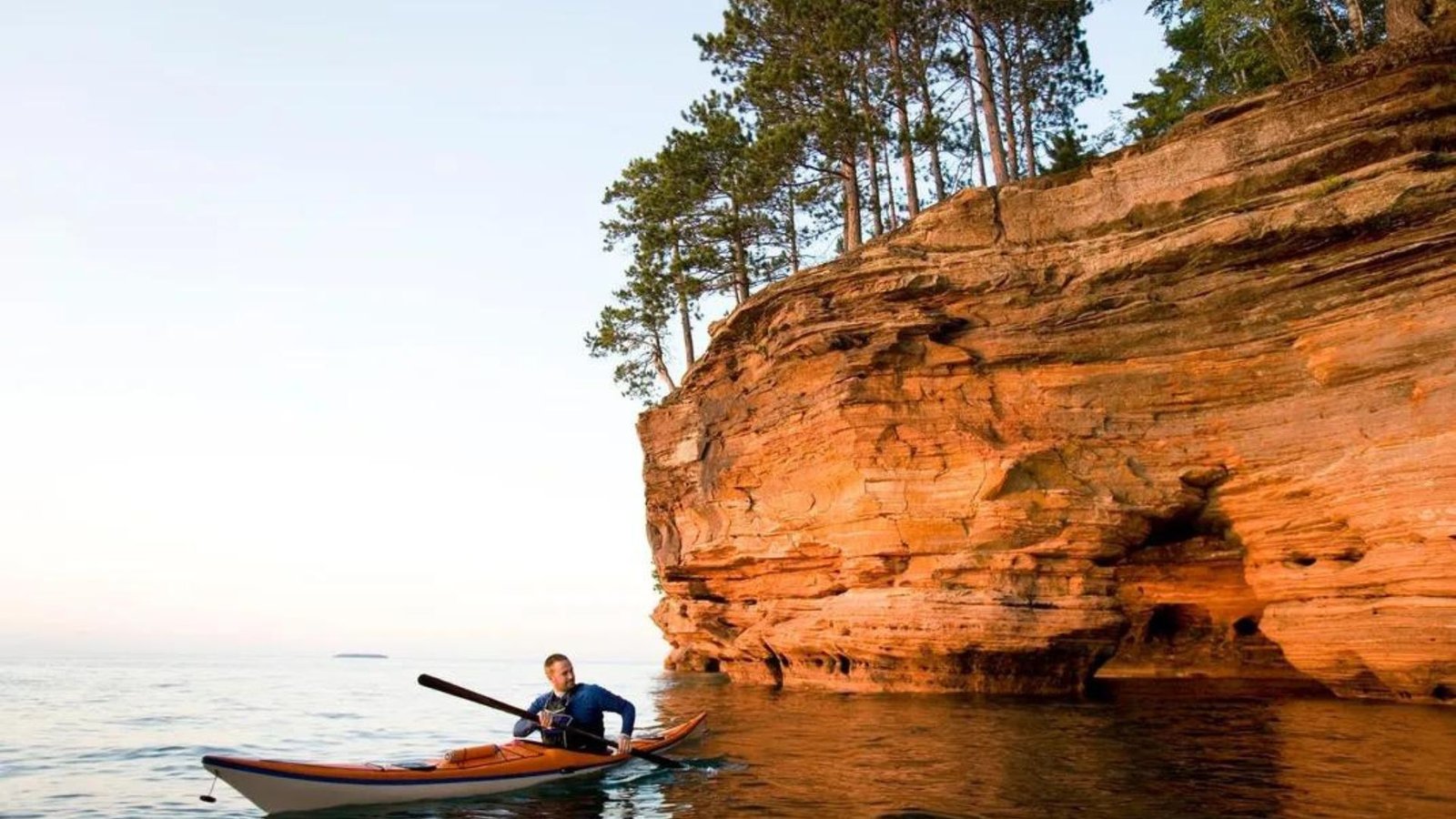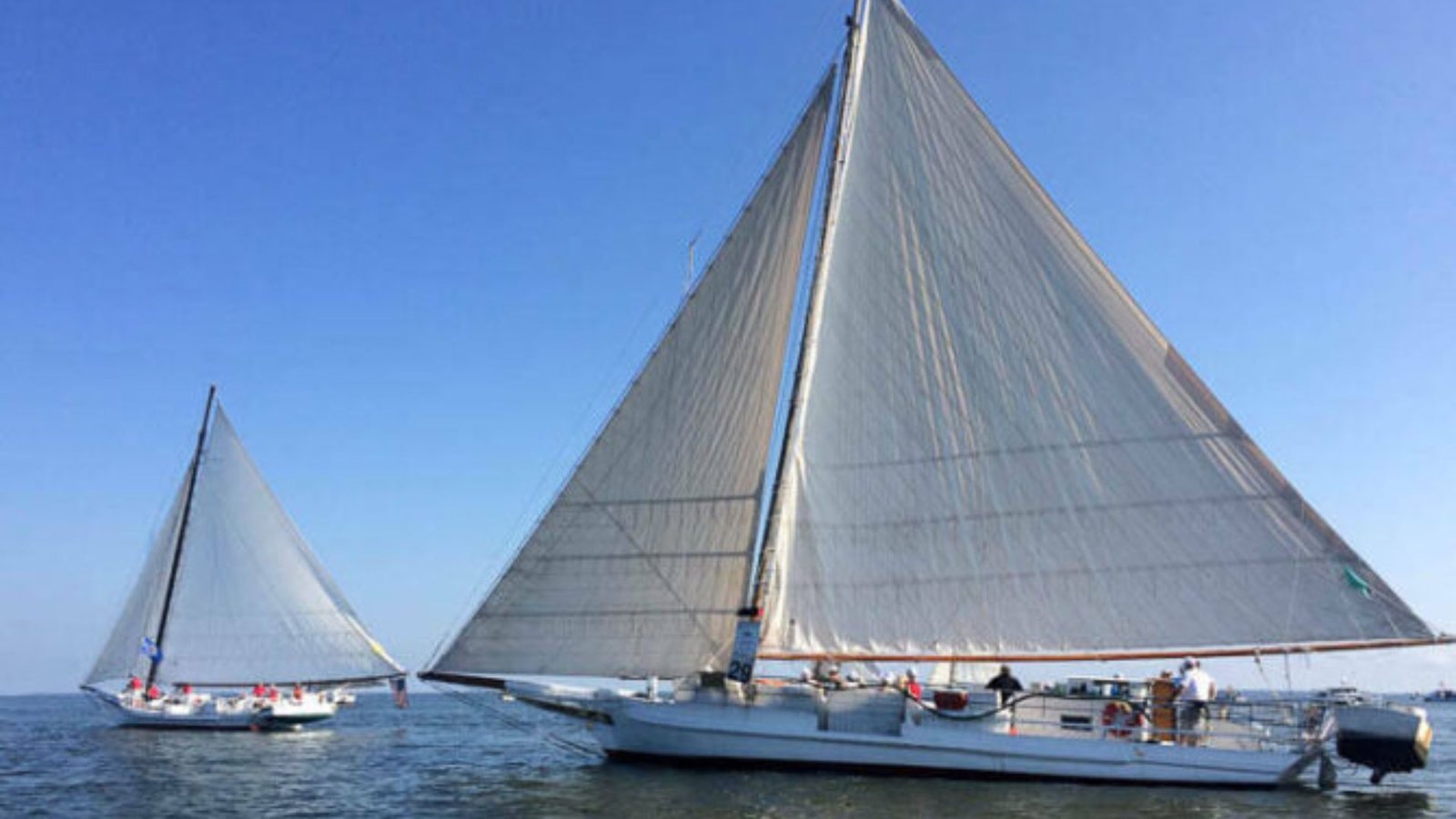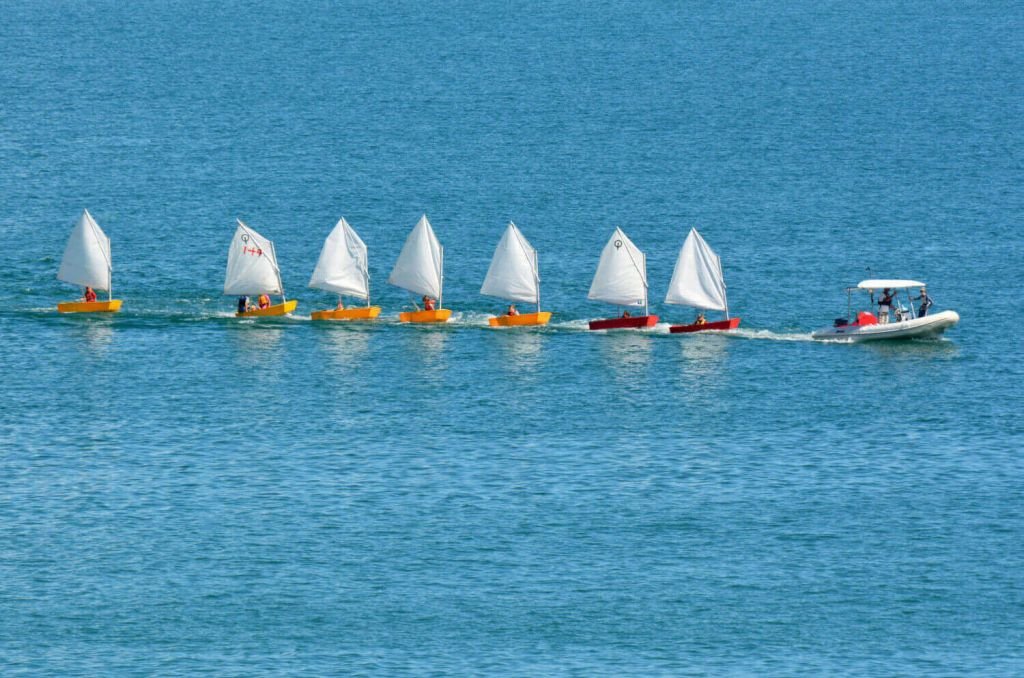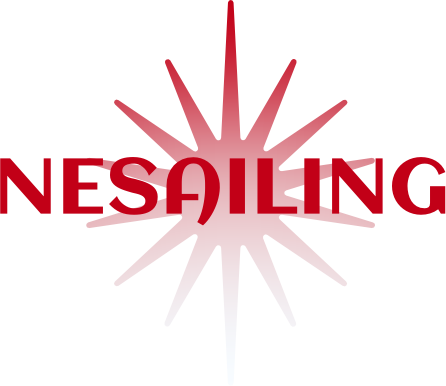Joining a yacht club can elevate your sailing experience by providing access to top-notch facilities, expert instruction, and a vibrant community of fellow enthusiasts. In the USA, numerous yacht clubs […]
Read More
Top Sailing Festivals on the West Coast
The West Coast of the USA is famous for its vibrant sailing scene, with numerous festivals celebrating the sport. These events attract sailors from around the world and offer a […]
Read More
Exploring America’s National Parks by Sailboat
Exploring America’s National Parks by sailboat offers a unique and unforgettable experience. From the tranquil waters of the Pacific Northwest to the vibrant ecosystems of the Florida Keys, these parks […]
Read More
Sustainable Sailing Practices in the USA
Sustainable sailing practices are increasingly vital as sailors seek to reduce their environmental impact while enjoying the beauty of our waterways. By adopting eco-friendly habits, sailors can contribute to the […]
Read More
Sailing the Chesapeake Bay: Tips and Tricks
The Chesapeake Bay is a top destination for sailors, known for its scenic beauty, rich history, and diverse marine life. This guide provides essential tips and tricks for sailing the […]
Read More
Sailboat Maintenance Tips for the USA
Maintaining a sailboat is essential for ensuring its longevity and performance. Proper upkeep not only enhances safety but also improves your sailing experience. In the USA, where diverse weather conditions […]
Read More
The Best Spots for Night Sailing in the USA
Night sailing offers a unique and enchanting way to experience the water, with the stars above and the gentle sounds of the sea providing a serene backdrop. The USA boasts […]
Read More
Sailing Routes Through US Southern States
The Southern United States offers a diverse range of sailing experiences, from serene coastal waters to bustling bays. This guide will take you through some of the most popular and […]
Read More
How to Find Affordable Sailing Lessons in the USA
Sailing is a rewarding and exhilarating activity, but it can seem expensive if you’re just starting out. Fortunately, finding affordable sailing lessons in the USA is possible with a bit […]
Read More
How to Sail Green: Eco-Friendly Tips for US Sailors
As awareness of environmental issues grows, many sailors are looking for ways to reduce their ecological footprint. Sailing green not only helps protect marine ecosystems but also promotes a sustainable […]
Read MoreWelcome to NE Sailing — Your Sailing Guide
Welcome to NE Sailing! We are your go-to website for all things sailing in the Northeast. Our mission is to help you enjoy sailing safely, easily, and with joy. We cover everything—from choosing the right boats, exploring top destinations, learning sailing skills, to picking the best tools and equipment. We want you to feel confident and excited every time you step on your boat.
Sailing is a great hobby that brings people together. At NE Sailing, we want to help everyone discover the magic of sailing in the beautiful Northeast region. Join us as we sail through tips, guides, and inspiring stories made just for you.
What We Offer
We provide detailed, easy-to-understand content in these key areas:
- Boats
- Destinations
- Guides
- Sailing
- Tools and Equipment
Now, let's dive deeper into each category to show you how we can help you become a better sailor and enjoy your adventures more fully.
Boats
A boat is not just a machine; it is your partner on every sailing trip. Knowing your boat well helps you sail more safely, faster, and with greater enjoyment.
Types of Sailboats Explained
There are different types of sailboats. Some common types are:
- Yachts: These are bigger boats designed for longer trips. Yachts have cabins where you can sleep, cook, and relax. They often come with multiple sails and more powerful engines.
- Catamarans: These boats have two hulls instead of one. They are popular for cruising and island hopping.
- Sloops, Cutters, and Ketches: These terms describe different sail setups. Sloops have one mast and two sails. Cutters have a mast and more than two sails, while ketches have two masts, with the second, smaller mast at the back.
How to Choose the Right Boat for You
Choosing the right boat is an important step before you start your sailing journey. Many factors come into play, and thinking about each one helps you find the perfect match for your needs. Here are some key things to consider:
Your Skill Level
If you are new to sailing, it is best to start with smaller and simpler boats. These boats are easier to handle and learn on. As you gain more experience and confidence, you can explore larger boats with more features and power. Choosing a boat that matches your skill level helps you stay safe and enjoy sailing more.
Where Do You Plan to Sail
The place where you will sail greatly affects the type of boat you need. For calm lakes or small rivers, lighter boats with shallow drafts work well. On the other hand, if you plan to sail along the coast or in the open ocean, you will need boats that are stronger and built to handle rough waves and changing weather. Knowing your sailing location helps you pick a boat designed for those waters.
What You Want to Do on the Water
Different sailing activities require different boats. For example, if you want short day trips or casual outings, a small sailboat or motorboat might be perfect. If you enjoy longer weekend cruises or overnight stays, a boat with cabins and more storage will suit you better. Racing boats are designed for speed and performance and need special handling. Understanding your sailing goals guides your boat choice.
Your Budget
Boats come in many price ranges, from affordable used boats to expensive new yachts. It is important to set a clear budget, but also remember to include costs beyond the purchase price. Maintenance, repairs, storage fees, insurance, and upgrades all add up. Planning for these expenses helps you avoid surprises and keeps your boating experience smooth.
Additional Considerations
Other factors to think about include the number of people you want to carry, how much space you need for gear, and whether you want a sailboat or a motorboat. Some people also consider environmental impact and fuel efficiency when choosing a boat.
At NE Sailing, we understand these choices can feel overwhelming. That's why we provide detailed guides, step-by-step checklists, and expert advice. Our resources help you compare different boats side by side, understand pros and cons, and find the one that fits your lifestyle perfectly.
With the right boat, your sailing adventures will be safer, more fun, and more rewarding. Let us help you start your journey with confidence and joy.
Caring for Your Boat
Proper boat maintenance is essential for safety, longevity, and overall enjoyment. It doesn't have to be difficult — just consistent.
Caring for Your Boat
Taking good care of your boat is very important. Proper maintenance keeps your boat safe, reliable, and looking great. The good news is that caring for your boat does not have to be difficult or time-consuming. With regular attention and simple steps, you can keep your boat in top condition. Some important areas to focus on are:
Cleaning Your Boat
Regular cleaning is one of the easiest and most effective ways to protect your boat. Saltwater, dirt, algae, and bird droppings can damage the paint, metal, and wood if left too long. Washing your boat with fresh water and marine-safe soap after every trip removes these harmful elements. Pay special attention to the hull, deck, and areas around fittings. Cleaning also helps you spot small problems early before they become big issues.
Inspecting for Damage
Before and after every trip, check your boat carefully for any damage. Look for cracks in the hull, worn or torn sails, loose fittings, or leaks. Small cracks or leaks can worsen quickly, so fixing them early saves time and money. Also, check your rigging, ropes, and lines to make sure they are strong and secure.
Engine Care and Maintenance
If your boat has an engine, it needs regular care to keep running smoothly. Check coolant levels and belts, and clean the fuel system to avoid blockages. Also, inspect the propeller for damage and remove any debris. A well-maintained engine performs better, uses less fuel, and lasts longer. Don't forget to run the engine regularly, even in the off-season, to keep parts lubricated.
Checking Safety Equipment
Your safety equipment is crucial for emergencies. Regularly inspect life jackets to ensure they are not torn or damaged and that the sizes fit your crew. Test flares, radios, fire extinguishers, and first aid kits to make sure everything works properly. Replace expired or damaged items promptly. Having well-maintained safety gear can save lives during unexpected situations on the water.
Preparing for Winter Storage
If you live in a place with cold winters, proper storage is vital. Cover your boat with a waterproof cover or store it in a dry, sheltered place. Remove electronics and batteries or disconnect them to prevent damage. Proper winterizing ensures your boat is ready to go when the season returns.
Extra Tips and Resources
Besides these basics, there are other maintenance tasks like polishing the hull, checking bilge pumps, and inspecting electrical systems. Regularly updating your maintenance log helps you track when tasks were done and what still needs attention.
At NE Sailing, we provide detailed step-by-step guides tailored to different types of boats. Our tips include easy ways to clean, inspect, and maintain your vessel. We also offer seasonal maintenance schedules and reminders so you never miss important care tasks. Our goal is to make boat maintenance simple, manageable, and stress-free for all sailors.
Taking good care of your boat means more fun and fewer problems on the water. With regular attention and the right knowledge, your boat will stay strong, safe, and beautiful for many sailing seasons ahead. Let us help you protect your investment and enjoy your time afloat to the fullest.
Destinations
The Northeast offers an incredible variety of sailing locations.
Top Sailing Destinations
- Maine Coast: Known for its rugged beauty, rocky shores, and quaint villages. Sail past lighthouses, visit lobster shacks, and anchor in peaceful coves.
- Massachusetts Bay and Cape Cod: This area features sandy beaches, historic towns, and busy ports. You can enjoy whale watching, fishing, and sailing festivals.
- Rhode Island: With miles of coastline and hundreds of islands, Rhode Island offers sheltered waters perfect for sailing. Newport is famous for its sailing culture.
- Connecticut Sound: This region has calm waters and many marinas. It's a good spot for family sailing and weekend getaways.
- New York Harbor and Long Island Sound: Sail near the city skyline, past famous landmarks like the Statue of Liberty, and explore the islands of Long Island Sound.
Planning Your Sailing Trip
Before you go sailing, you need to plan carefully. A good plan helps you stay safe, save time, and have more fun on the water. Whether it's a short day trip or a week-long sailing adventure, proper preparation makes everything smoother.
Let's look at the most important things to think about before setting sail:
1. Check Weather and Tides
One of the most important parts of planning is checking the weather. Wind, rain, storms, and tides can all affect your trip.
- Weather Forecasts: Always check the weather forecast for the day and the next few days. Look for wind speeds, chances of rain, and any warnings about storms or rough seas.
- Tide Charts: Tides rise and fall, and this can change the depth of water in certain areas. Use tide charts to know the best time to move.
- Wind Direction: Wind powers your sails, so know where it's coming from and how it might change. Strong gusts or sudden shifts can make sailing harder.
- Use Tools: Use apps or websites that give up-to-date marine weather information. You can also install tools like barometers and wind meters on your boat.
If you sail into bad weather without knowing, your trip can quickly turn dangerous. So always stay one step ahead.
2. Know Your Route
Next, it's very important to know exactly where you're going. Sailing blindly can lead to getting lost or ending up in restricted or dangerous waters.
- Use Nautical Charts: These maps show water depth, rocks, reefs, harbors, and safe routes.
- Mark Landmarks: Know the important landmarks along your way. These help you confirm you're on the right path.
- GPS Navigation: Most modern sailors use GPS systems. These show your exact location and help you follow your course easily.
- Backup Plan: Sometimes, the wind or tide changes your course. Always have an alternate route or a safe harbor nearby in case plans change.
Knowing your route helps you avoid accidents and ensures you reach your destination safely and on time.
3. Prepare Your Crew
Sailing is a team activity. Everyone on the boat should know what to do and what to expect.
- Assign Roles: Choose who will handle the sails, steer the boat, watch for obstacles, or prepare meals. Even beginners can help.
- Give Safety Training: Teach everyone where the life jackets are, how to use a radio, and what to do in an emergency.
- Practice Together: If your crew is new, practice sailing maneuvers before heading out to deep water.
When everyone knows their role, the trip becomes smoother, faster, and more fun for everyone.
4. Pack Essentials
Packing the right items is also part of good planning. You may be out on the water for hours or even days, so bring everything you need to stay safe and comfortable.
Here's a basic checklist:
- Food and Water: Bring enough meals, snacks, and fresh water for the whole trip. Always pack a little extra in case the trip takes longer than expected.
- First Aid Kit: This should include bandages, seasickness tablets, disinfectant, painkillers, and any personal medications.
- Sunscreen and Hats: The sun can be very strong on open water. Protect your skin and eyes.
- Safety Gear: Life jackets for everyone, a fire extinguisher, emergency flares, and a working VHF radio.
- Spare Clothes: It's easy to get wet while sailing. Always pack dry clothes, warm jackets, and rain gear.
- Navigation Tools: Even if you have GPS, bring a compass, printed charts, and a flashlight for emergencies.
Being well-prepared means you can enjoy your trip without worry.
5. Know Local Regulations
Different areas have different rules. These rules are there to protect people, the environment, and marine life. This preparation is different from the chance-based fun of online games like crazy vegas online craps.
- Anchoring Rules: Some places don't allow anchoring to protect coral reefs or sea beds.
- Fishing Laws: You may need a fishing license, and there could be limits on what or how much you can catch.
- Speed Limits: In some harbors or near swimming areas, there are speed limits for boats.
- Protected Areas: Some waters are part of marine parks. You may not be allowed to sail, fish, or anchor there.
Check these rules before you go. You can find them online, at local marinas, or in sailing guidebooks. Following the rules keeps you out of trouble and helps protect nature.
6. Use Our Sailing Guides and Tools
At NE Sailing, we know how important it is to have the right help before your trip. That's why we offer:
- Detailed Destination Guides: Learn about top sailing spots, local ports, must-see views, and things to avoid.
- Interactive Maps: Our maps help you chart your course clearly and easily.
- Weather and Tide Tools: Use our tools to check conditions before and during your trip.
- Packing Lists and Checklists: Print or download our ready-to-use lists so you don't forget anything.
- Sailing Tips: Read articles with helpful advice from experienced sailors, including how to sail smarter, faster, and safer.
We make sailing easier by giving you the tools and knowledge you need before you even leave the dock.
Discover Hidden Gems
Besides well-known spots, the Northeast hides secret places only locals know:
- Quiet islands are perfect for camping
- Small fishing villages with fresh seafood
- Secluded beaches where you can swim and relax
- Scenic nature reserves accessible by boat
Explore our blog to find these hidden treasures and plan unique trips. While you explore our destinations, it's interesting to see how people in other regions enjoy their leisure time; for example, you can visit the site officiel de lariviera casino for a look at French online entertainment.
Guides
Learning to sail is a journey. Our guides are here to make that journey easier and more enjoyable.
Sailing Basics
We start with simple lessons on:
- Parts of a Boat: Hull, mast, boom, rudder, and sails.
- How Sails Work: Understand how to use wind to move your boat.
- Steering and Maneuvering: Learn how to tack and jibe safely.
- Reading the Wind: Learn to feel and observe the wind for better control.
Our lessons use clear language and pictures so beginners can follow easily.
Safety First
Safety saves lives. Our safety guides cover:
- Life Jackets and Harnesses: How to choose and wear them properly.
- Man Overboard Procedures: What to do if someone falls in the water.
- Communication Tools: Radios, flares, and emergency beacons.
- Rules of the Water: Right-of-way and navigation signs.
Advanced Techniques
For experienced sailors, we offer:
- Navigation Using Charts and GPS
- Sail Trim for Speed and Efficiency
- Night Sailing Tips
- Racing Strategies
- Handling Rough Seas
Sailing with Family and Friends
Sailing is a fun group activity. We share tips on:
- Keeping children safe and entertained
- Managing groups with mixed skill levels
- Planning meals and rest stops onboard
- Creating fun onboard games and traditions
Sailing
Sailing teaches patience, teamwork, and respect for nature.
Why Sail?
Sailing lets you:
- Explore New Places: Reach islands and shores you cannot access by car.
- Relax and De-stress: Feel the wind and waves calm your mind.
- Exercise Naturally: Sailing uses your whole body and keeps you fit.
- Meet People: Join sailing clubs, races, and events to make friends.
- Challenge Yourself: Learn new skills and solve problems on the water. This is a different kind of recreational activity than online gaming, where you can find more information if you Click here.
Getting Started
If you are new to sailing:
- Start with lessons from certified instructors.
- Practice on calm waters.
- Join beginner-friendly clubs or groups.
- Rent or borrow boats before buying.
- Watch videos and read guides to learn terminology and basics.
Join the Community
Sailing is social. We help you find:
- Local sailing clubs and events
- Volunteer opportunities with sailing organizations
- Online forums and groups for advice and stories
- Sailing races and regattas in the Northeast
Tools and Equipment: Gear Up for Safe and Fun Sailing
Using the right gear improves your sailing experience. Here is what you need to know.
Essential Tools and Safety Gear
Some tools and gear every sailor needs:
- Life Jackets: Always wear one; choose the right size and type.
- Anchor and Rope: Secure your boat when you stop.
- Navigation Tools: Compass, charts, GPS device.
- VHF Radio: Communicate with other boats and emergency services.
- Flares and Signal Devices: For emergencies.
- First Aid Kit: Treat minor injuries onboard.
Modern Sailing Technology
Technology can help you sail smarter:
- Electronic Chartplotters: Show your exact location and routes.
- Wind Instruments: Measure wind speed and direction.
- Autopilot Systems: Help steer on long trips.
- Mobile Apps: Track weather, tides, and navigation.
Clothing and Protection
Dress for the conditions:
- Layered clothing for warmth
- Waterproof jackets and pants
- Sailing gloves to protect your hands
- Sunglasses with UV protection
- Sunscreen and hats for sun safety
Maintenance Tools
Maintain your boat and equipment with:
- Cleaning brushes and marine soap
- Repair kits for sails and hull
- Lubricants for moving parts
- Spare ropes and lines
Start Your Sailing Adventure Today
At NE Sailing, we want you to feel ready and excited to sail. Whether you dream of calm days on a lake or long ocean voyages, we provide fresh, easy-to-understand guides, tips, and inspiration. Use our website to learn about boats, discover amazing destinations, improve your skills, and gear up with the best equipment. For those in New Zealand interested in different ways to have fun online, you can Get started by exploring various gaming options.
Join our community, share your stories, and become part of the Northeast's vibrant sailing culture. Let the wind guide you and the water set you free. Happy sailing!

